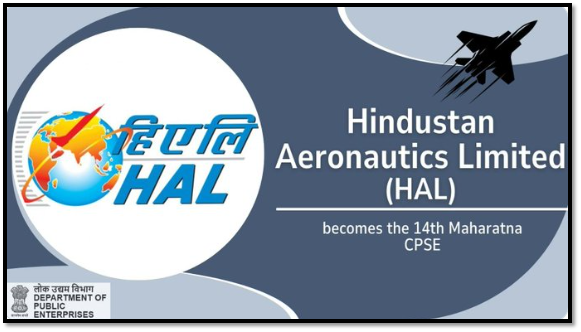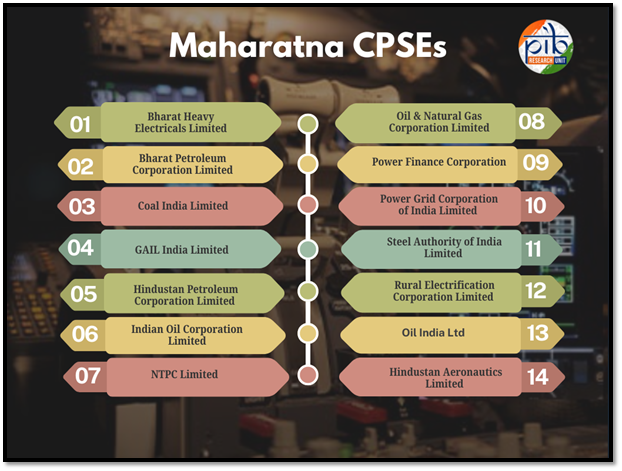| News | |||
|
Home |
|||
|
|
|||
HAL's Maharatna Status: Indiaís Growth Towards Aerospace Industry |
|||
| 14-10-2024 | |||
A shining example of this commitment is Hindustan Aeronautics Limited (HAL), which has attained the prestigious Maharatna status, becoming the 14th Central Public Sector Enterprises (CPSE) in India to receive this recognition. This milestone marks a significant achievement for HAL, which is a prominent player in the Indian aerospace and defence sector. The upgradation is approved by the Finance Minister, following recommendations from both the Inter-Ministerial Committee (IMC), led by the Finance Secretary, and the Apex Committee, headed by the Cabinet Secretary.
Understanding Maharatna Status The Government introduced the ‘Navratna’ scheme in 1997 to identify and support CPSEs with competitive advantages in their journey to becoming global leaders. Under this scheme, ‘Navratna’ CPSEs were granted powers in capital expenditure, joint ventures, and human resources management. As many of these companies grew significantly larger than their peers, the need arose for a new classification—‘Maharatna’—to recognize those with the potential to become Indian multinational companies (MNCs). This higher status incentivizes other ‘Navratna’ companies, enhances brand value, and allows for the delegation of greater powers to CPSEs, fostering further growth and international competitiveness. The Maharatna status is granted to CPSEs in India, allowing them greater operational and financial autonomy. To qualify for this status, companies must meet specific criteria, which include:
HAL's Financial Performance For the fiscal year 2023-24, HAL reported an impressive turnover of ₹28,162 crore and a net profit of ₹7,595 crore, solidifying its position as a leading public sector enterprise in India. This financial success is a testament to HAL’s strategic initiatives and its pivotal role in the aerospace industry. Implications of Maharatna Status Achieving Maharatna status empowers HAL with enhanced financial autonomy, enabling it to make significant investment decisions without requiring prior government approval. This autonomy is expected to facilitate quicker project implementation, drive innovation, and enhance operational efficiency. Furthermore, this status places HAL among the most influential and financially stable public sector undertakings in India, highlighting its strategic importance not only within the country but also on a global scale.
Strategic Importance HAL plays a crucial role in India's defence capabilities, focusing on self-reliance in military aviation. The company's developments, like the Light Combat Aircraft (LCA) namely Tejas and the Light Utility Helicopter (LUH), are central to modernizing the Indian Armed Forces. HAL's commitment to innovation and quality has positioned it as a significant player in the global aerospace industry. Strengthening Aatmanirbhar Bharat through Indigenous Aero Engine Production In a significant advancement for Aatmanirbhar Bharat, the Ministry of Defence (MoD) signed a contract with Hindustan Aeronautics Limited (HAL) on September 9, 2024, for 240 AL-31FP aero engines for Su-30MKI aircraft, valued at over Rs 26,000 crore. This contract underscores a commitment to indigenous manufacturing, as the engines will be produced at HAL's Koraput Division, bolstering the Indian Air Force's operational capabilities. HAL aims to deliver 30 engines annually over the next eight years, with plans to enhance indigenisation to 63% by the program's completion, significantly increasing local content in repair and overhaul tasks. This initiative emphasizes collaboration with India’s defence manufacturing ecosystem, including MSMEs and both public and private sectors, reinforcing the nation’s self-reliance in defence production. A Brief History of HAL HAL's journey began more than 80 years ago, evolving alongside the Indian aeronautical industry. Established on December 23, 1940, as Hindustan Aircraft Limited in Bangalore by visionary Walchand Hirachand, the company aimed to manufacture aircraft domestically. The Government of India became a shareholder in 1941, assuming full management control in 1942. Initially, HAL focused on manufacturing aircraft under licenses from foreign companies, producing models like the Harlow Trainer and Curtiss Hawk Fighter. In 1951, HAL came under the Ministry of Defence’s administrative control and began indigenously designing and developing aircraft, such as the HT-2 Trainer and the HF-24 Jet Fighter (Marut). Key Milestones
Conclusion HAL’s recognition as a Maharatna company is a testament to its growth, resilience, and strategic contributions to India’s aerospace and defence sectors. This achievement not only reflects HAL's robust financial health but also underscores its critical role in advancing India’s self-reliance in defence production and enhancing its global standing in the aerospace industry. References: https://x.com/DPE_GoI/status/1844998712512176573 https://hal-india.co.in/our-history https://sansad.in/getFile/loksabhaquestions/annex/172/AU2444.pdf?source=pqals https://dpe.gov.in/en/about-us/policy-i-division/list-maharatna-navratna-and-miniratna-cpses-0 https://pib.gov.in/newsite/erelcontent.aspx?relid=96030 |
|||
 9911796707
9911796707



